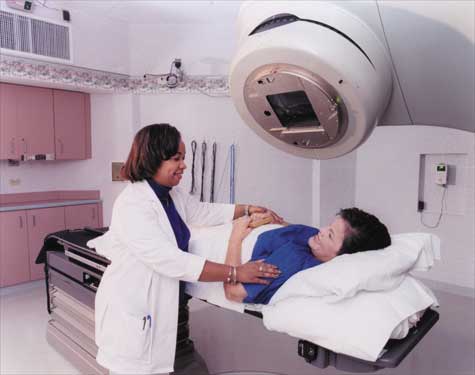 Home:
Meeting
Highlights: Posters
Home:
Meeting
Highlights: Posters

2000
NIH Consensus Conference on Adjuvant Therapy of Breast Cancer
Richard Kaderman, Ph.D.
On November
1-3, 2000, the fourth NIH Consensus Development Conference on adjuvant
therapy for breast cancer was convened in Bethesda, Maryland, with
over 1,200 attendees and simultaneous worldwide webcast. Previous
meetings were held in 1980, 1985 and 1990, but the current conference
seemed particularly meaningful in light of the recent report of
sharp declines in breast cancer-related mortality in the United
Kingdom and United States. The Consensus Statement, abstract book,
and the National Library of Medicine's bibliography of over 2,200
citations from 1995-2000, may be read or downloaded as PDFs at:
http://odp.od.nih.gov/consensus/cons/114/114_intro.htm
New and promising
strategies not addressed by the panel, but considered worthy topics
for ongoing clinical research:
- Mapping and
evaluation of sentinel lymph nodes
- Immunohistochemical
evaluation of bone marrow biopsies
- Herceptin
as a single agent or combined with cytotoxic or hormonal agents
- Bisphosphonates
as adjuvant therapy
- Delayed use
of chemotherapy or hormonal adjuvant therapy and "maintenance"
adjuvant therapy
- Small molecule
inhibitors, antisense gene constructs, antiangiogenesis compounds
and vaccines

Selected
Comments from the Final Statement
(Note: The
entire Consensus Statement is reproduced in the appendix to the
educational supplement binder.)
| 1.
Which factors should be used to select systemic adjuvant therapy? |
"Accepted
prognostic and predictive factors include age, tumor size, axillary
node status, histological tumor type, standardized pathologic grade,
and hormonal-receptor status."
"Although
overexpression/amplification of HER-2/neu is associated with an
adverse outcome in node-positive patients and may predict the response
to therapy, laboratory methods and the reporting of results require
standardization before its predictive performance can be established."
"The development
of immunohistochemical and molecular methods to identify occult
cancer cells (i.e., micrometastases) in histologically tumor-free
axillary lymph nodes or bone marrow has raised questions as to whether
such findings should alter the clinical stage and become a further
indication for systemic adjuvant therapy. At present, the clinical
significance of these findings remains uncertain, and they require
assessment in prospective clinical trials before they directly alter
patient management."
"It is
essential that the value of predictive and prognostic factors be
evaluated in well-designed clinical studies that are based on standardized
protocols and have sufficient statistical power. Because these standards
are infrequently met, very few new prognostic or predictive factors
have been validated in the last 10 years, and future progress will
depend on greater attention to these standards."
| 2.
For which patients should adjuvant hormonal therapy be recommended?
|
"The decision
whether to recommend adjuvant hormonal therapy should be based on
the presence of hormone receptors, as assessed by immunohistochemical
staining of breast cancer tissue. If the available tissue is insufficient
to determine hormone receptor status, it should be considered as
being positive, particularly in postmenopausal women. The small
subset of women whose tumors lack hormone receptor protein but contain
progesterone receptor also appear to benefit from hormonal therapy."
"Adjuvant
hormonal therapy should be recommended to women whose breast tumors
contain hormone receptor protein, regardless of age, menopausal
status, involvement of axillary lymph nodes, or tumor size. While
the likelihood of benefit correlates with the amount of hormone
receptor protein in tumor cells, patients with any extent of hormone
receptor in their tumor cells may still benefit from hormonal therapy."
"Randomized
trials and a meta-analysis have shown that 5 years of tamoxifen
are superior to 1 to 2 years of such treatment. Currently, there
are no convincing data that justify the use of tamoxifen for longer
than 5 years outside the setting of a clinical trial."
"Neither
transvaginal ultrasonography nor endometrial biopsies are indicated
as screening maneuvers for endometrial cancer in asymptomatic women
taking tamoxifen."
"Ovarian
ablation appears to produce a similar benefit to some chemotherapy
regimens. Combining ovarian ablation with chemotherapy has not been
shown to provide an additional advantage to date. The value of combining
hormonal therapies has not yet been adequately explored."
| 3.
For which patients should adjuvant chemotherapy be recommended?
Which agents should be used and at what dose or schedule? |
"Available
data indicate that adjuvant chemotherapy regimens that include an
anthracycline result in a small but statistically significant improvement
in survival compared to nonanthracycline-containing programs."
"Randomized
trials have demonstrated threshold dose effects for two of the most
active chemotherapeutic agents, doxorubicin (A) and cyclophosphamide
(C). These two drugs are frequently administered together (AC) and
appear to result in a comparable survival outcome, whether given
preoperatively or postoperatively. However, AC has not been compared
to cyclophosphamide/doxorubicin/5-fluorouracil (CAF) or cyclophosphamide/epirubicin/5-fluorouracil
(CEF)."
"There
is currently no convincing evidence to demonstrate that more dose-intensive
treatment regimens (e.g., high-dose chemotherapy with peripheral
stem cell support) result in improved outcomes compared to the administration
of polychemotherapy programs at standard dose levels. Such stem
cell-support treatment strategies should not be offered outside
the setting of a randomized clinical trial."
"Taxanes
(docetaxel, paclitaxel) have recently been demonstrated to be among
the most active agents in the treatment of metastatic breast cancer.
As a result, several studies have explored the clinical utility
of adding these drugs to standard doxorubicin/cyclophosphamide treatment
programs in the adjuvant treatment of node-positive, localized breast
cancer. Although a number of such trials have completed accrual
and others remain in progress, currently available data are inconclusive
and do not permit definitive recommendations regarding the impact
of taxanes on either relapse-free or overall survival. There is
no evidence to support the use of taxanes in node-negative breast
cancer outside the setting of a clinical trial."
"Available
data demonstrate that chemotherapy and tamoxifen are additive in
their impact on survival when employed as adjuvant treatment of
breast cancer. Therefore, most patients with hormone receptor positive
tumors who are receiving chemotherapy should receive tamoxifen."
"At the
present time, there are no convincing data to support the use of
any known biological factor in selecting a specific adjuvant chemotherapy
regimen in breast cancer. Future prospective studies are needed
to determine if such factors in an individual patient (e.g., HER-2/neu
overexpression) should influence the choice of adjuvant cytotoxic
therapy."
"On the
basis of available data, it is accepted practice to offer cytotoxic
chemotherapy to most women with lymph node metastases or with primary
breast cancers larger than 1 cm in diameter (both node-negative
and node-positive). For women with node-negative cancers less than
1 cm in diameter, the decision to consider chemotherapy should be
individualized."
| 4.
For which patients should post-mastectomy radiation therapy
be recommended? |
"There
is evidence that women with a high risk of locoregional tumor recurrence
after mastectomy will benefit from postoperative radiotherapy. This
high-risk group includes women with four or more positive lymph
nodes or an advanced primary tumor."
"At this
time, the role of post-mastectomy radiotherapy for women with one
to three positive lymph nodes remains uncertain and is being examined
in a randomized clinical trial."

| 5.
How do side effects and quality-of-life issues factor into individual
decision-making about adjuvant therapy? |
"Retrospective
studies report that women may be willing to undergo treatment for
as little as a 1 to 2 percent improvement in the probability of
survival. Clear communication of benefits and risks is an essential
component in enabling as informed a joint treatment decision as
possible. Absolute and relative benefits and risks of therapy must
be discussed openly."

"Communication
between patients and their physicians is the primary vehicle through
which complex treatment decisions are made. This communication will
likely be facilitated through the use of decision aids, and well-designed
patient information materials about the medical condition or procedure,
treatment side effects, probabilities associated with health outcomes,
and impact on quality of life."
Top
of Page
|



